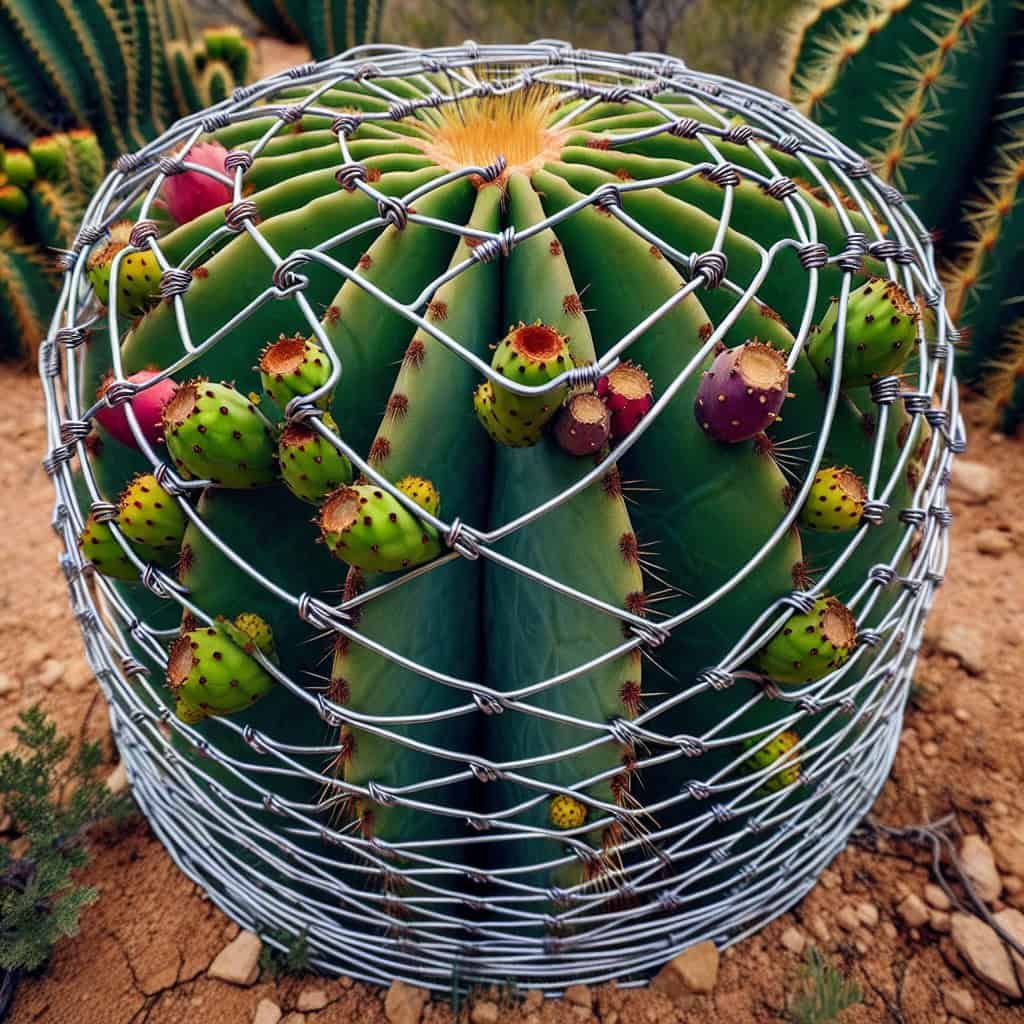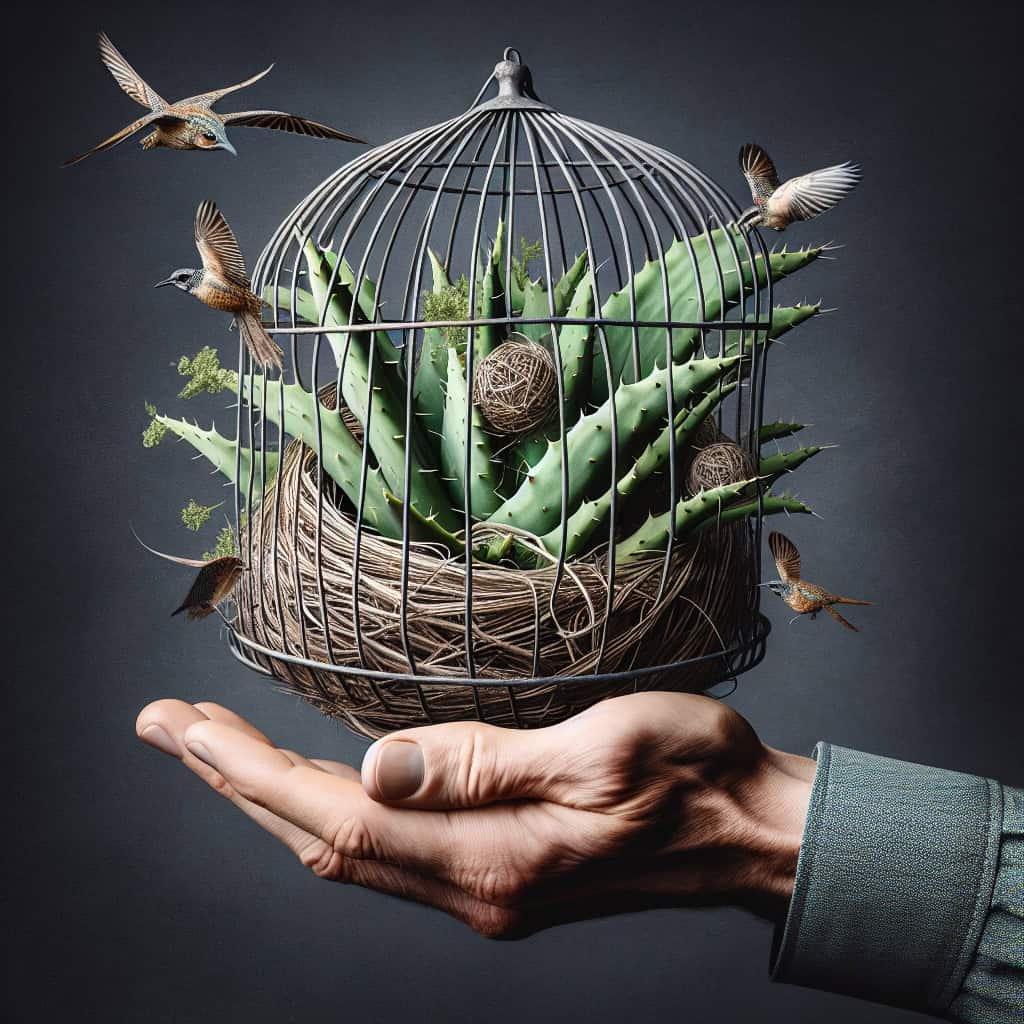If you’ve ever attempted to grow nopal, a delicious and nutritious cactus plant, you may have encountered a pesky problem: birds and wildlife feasting on your precious crop. As these creatures become increasingly drawn to the vibrant colors and succulent taste of nopal, it’s crucial to find effective ways to safeguard your plants. In this article, we will explore some practical tips and strategies to help you protect your beloved nopal from the clutches of hungry birds and wildlife, ensuring a bountiful harvest for yourself and your family. So, let’s get started on creating a haven for your nopal that will leave those creatures searching for a different snack.
Choosing the Right Location
Consider the Surrounding Environment
When it comes to protecting your nopal from birds and wildlife, choosing the right location is crucial. Take a close look at the surrounding environment and consider factors such as nearby trees, shrubs, and open spaces. Ideally, you want to select a location that is less attractive to birds, as this can significantly reduce the risk of them feasting on your precious nopal pads.
Avoid Areas with Heavy Bird Activity
Another important factor to consider when selecting a location for your nopal plants is the level of bird activity in the area. Birds can cause significant damage to your plants by pecking at and consuming the pads. Therefore, it is best to avoid areas with heavy bird populations or areas where birds are known to congregate.
Ensure Adequate Sunlight and Shade
Nopal plants require a good balance of sunlight and shade to thrive. When choosing a location, ensure that it provides adequate sunlight for healthy growth. However, be mindful of extreme heat and intense sunlight, as it can stress the plants. Adequate shade should also be considered, especially during the hottest parts of the day. Finding the right balance will not only benefit your nopal plants but may also deter some bird species that prefer more shaded areas.
Physical Barriers for Protection
Installing Bird Netting
One effective method to protect your nopal plants from birds is by installing bird netting. Bird netting forms a physical barrier that prevents birds from gaining access to your plants. It is essential to install the netting securely and ensure there are no gaps or loose ends where birds can enter. Netting is a popular choice as it is relatively easy to install, affordable, and does not harm the birds.
Constructing a Fence
If you have a larger area to protect or are dealing with more significant wildlife threats, constructing a fence around your nopal plants may be the best solution. A sturdy fence acts as a physical deterrent, preventing birds and wildlife from reaching your plants. Ensure the fence is tall enough to deter birds from flying over it and sturdy enough to withstand wildlife attempts to break through.
Using Garden Tunnels
Garden tunnels, also known as row covers or hoop houses, offer an alternative physical barrier to protect your nopal plants. These structures consist of arch-shaped frames covered with protective material such as netting or mesh. By enclosing your nopal plants within the garden tunnel, you create a barrier that keeps birds and wildlife at bay. Garden tunnels offer the advantage of allowing sunlight and rain to reach your plants while still providing protection.
Scare Tactics
Implementing Visual Deterrents
Visual deterrents are an excellent tool for deterring birds and wildlife from your nopal plants. Hanging shiny objects such as reflective tape, CD disks, or aluminum foil strips can create a visual disturbance that birds find unsettling. Additionally, using scarecrow-like decoys or plastic predators, such as owls or hawks, can help create the illusion of a dangerous environment, deterring birds from approaching.
Using Noise and Sound Deterrents
Birds are highly sensitive to noise and can be easily frightened by unfamiliar sounds. Utilizing noise deterrents such as wind chimes, bells, or even a well-placed radio can help keep birds away from your nopal plants. You may also explore purchasing electronic devices specifically designed to emit bird distress calls, which can effectively deter birds from the area.
Using Motion-Activated Devices
Motion-activated devices, such as sprinklers or lights, can be highly effective in scaring away birds and wildlife. These devices are triggered by motion, which startles and deters birds from landing near your nopal plants. The sudden burst of water from a sprinkler or the illumination of bright lights can disrupt birds’ feeding patterns and discourage them from returning.
Using Repellents
Natural Repellents
Using natural repellents can be a gentle and eco-friendly way to protect your nopal plants from birds and wildlife. Some natural repellents that may be effective include chili pepper powder, garlic spray, or vinegar solutions. These repellents create an unpleasant taste or smell for birds, deterring them from eating or damaging your nopal plants. Natural repellents should be reapplied regularly, especially after rain or heavy watering.
Chemical Repellents
If the natural repellents are not providing the desired level of protection, you may consider chemical repellents. Chemical repellents are typically available in the form of sprays or liquids that can be applied directly to your nopal plants. However, it is important to follow the manufacturer’s instructions carefully and ensure that the chemical repellents are safe for use on edible plants like nopal. Chemical repellents should be used as a last resort and with caution.
Attracting Natural Predators
Encouraging Bird of Prey Activity
Birds of prey, such as hawks and owls, are natural predators of smaller birds and can help keep bird populations under control. To attract these magnificent hunters to your nopal garden, consider installing perches or nesting platforms that mimic their natural habitats. Additionally, providing suitable food sources, such as small rodents or insects, can entice birds of prey to visit regularly and help protect your nopal plants.
Building Habitats for Natural Predators
Creating a habitat that can support natural predators of birds, such as snakes or mongooses, can also help deter bird activity in your nopal garden. These predators can actively hunt and reduce the number of birds around your plants. Ensure that the habitat provides suitable shelter and food sources for these natural predators, encouraging them to make your garden their home.
Maintaining a Clean Environment
Remove Attractive Food Sources
To discourage birds and wildlife from frequenting your nopal garden, it is essential to remove any attractive food sources they may be drawn to. This includes fallen fruits or seeds, garbage bins, or compost piles. By eliminating these food sources, you reduce the incentive for birds and wildlife to visit your garden and potentially damage your nopal plants.
Prune Surrounding Trees and Shrubs
Overhanging branches and dense shrubs provide ideal nesting spots and perches for birds, making it easier for them to access your nopal plants. Regularly pruning the surrounding trees and shrubs can help minimize these convenient locations and make it more challenging for birds and wildlife to navigate around your garden.
Keep the Ground Clean
In addition to maintaining a clean environment regarding food sources and foliage, it is crucial to keep the ground around your nopal plants clean. Fallen leaves, fruits, or debris can attract birds and wildlife, increasing the chances of damage to your nopal pads. Regularly sweep or rake the area to prevent accumulation and remove any potential attractants.
Harvesting and Protecting Nopal Pads
Harvest Timely and Regularly
To safeguard your nopal pads from birds and wildlife, it is important to harvest them in a timely and regular manner. Leaving ripe pads on the plant for an extended period can tempt birds and wildlife to help themselves. Regular harvesting not only ensures that you enjoy the delicious nopal pads at their peak, but it also reduces the chances of attracting unwanted visitors.
Prune Nopal Plants
Pruning your nopal plants can not only aid in their overall health and appearance but also provide protection against birds and wildlife. By strategically pruning your plants, you can control their size and shape, making it more challenging for birds to perch or access the pads. Pruning can also help allocate resources more effectively to the growing pads, resulting in better fruiting.
Use Protective Covers
Using protective covers, such as breathable mesh or fabric, can be an effective way to safeguard your nopal pads from birds and wildlife. These covers shield the pads from direct exposure and make it difficult for birds to peck at them. Ensure that the covers are securely fastened but still allow airflow and sunlight penetration to maintain healthy plant growth.
Training Birds and Wildlife
Using Positive Reinforcements
Training birds and wildlife may sound unusual, but positive reinforcement techniques can help redirect their behavior away from your nopal garden. By providing alternative feeding areas or bird feeders with desirable food sources, you can incentivize birds and wildlife to focus their attention elsewhere. Gradually reducing the availability of the desired food in your garden while increasing it in the designated alternative areas can encourage birds and wildlife to change their foraging habits.
Providing Alternative Feeding Areas
Creating designated feeding areas away from your nopal plants can help keep birds and wildlife from viewing your garden as a food source. Stock these alternative feeding areas with bird feeders or bins containing seeds or grains. By providing a consistent food source in the alternative areas, you increase the chances of diverting birds and wildlife’s attention away from your precious nopal.

Educating the Community
Organize Workshops and Seminars
Educating the community about the importance of protecting nopal plants from birds and wildlife can have a significant impact. Organizing workshops or seminars can help raise awareness and provide practical tips and solutions. Share your knowledge about effective deterrent techniques, sustainable cultivation practices, and strategies for coexisting with birds and wildlife. The more people understand the issue, the better equipped they will be to protect their own nopal plants.
Promote Sustainable Nopal Cultivation Practices
Promoting sustainable nopal cultivation practices is essential for the long-term protection and conservation of this versatile and nutritious plant. Encourage community members to adopt organic and eco-friendly cultivation methods that minimize the need for chemical deterrents. By promoting sustainable practices, you help protect not only nopal plants but also the overall ecosystem and biodiversity.
Seeking Professional Assistance
Consulting Local Agriculture Experts
If you are facing persistent bird and wildlife issues in your nopal garden, consulting with local agriculture experts can provide valuable insights and guidance. These professionals have the knowledge and experience to assess your specific situation and recommend tailored solutions. They may be able to identify additional factors contributing to the problem and propose effective strategies to protect your nopal plants.
Contacting Wildlife Conservation Organizations
Wildlife conservation organizations have a wealth of knowledge about local bird and wildlife behavior. Contacting these organizations can provide you with valuable information on species-specific deterrent methods and conservation efforts. They may offer resources, advice, or even connect you with experts who specialize in managing bird and wildlife conflicts. Remember, protecting your nopal plants can also contribute to the conservation of these wild creatures.
In conclusion, protecting your nopal plants from birds and wildlife requires a comprehensive approach that considers various factors. By choosing the right location, implementing physical barriers, utilizing scare tactics, employing repellents, attracting natural predators, maintaining a clean environment, harvesting and protecting nopal pads, training birds and wildlife, educating the community, and seeking professional assistance, you can ensure the safety and success of your nopal garden. Embracing these strategies will not only help you enjoy a bountiful harvest but also foster a harmonious coexistence with the birds and wildlife in your surroundings.




